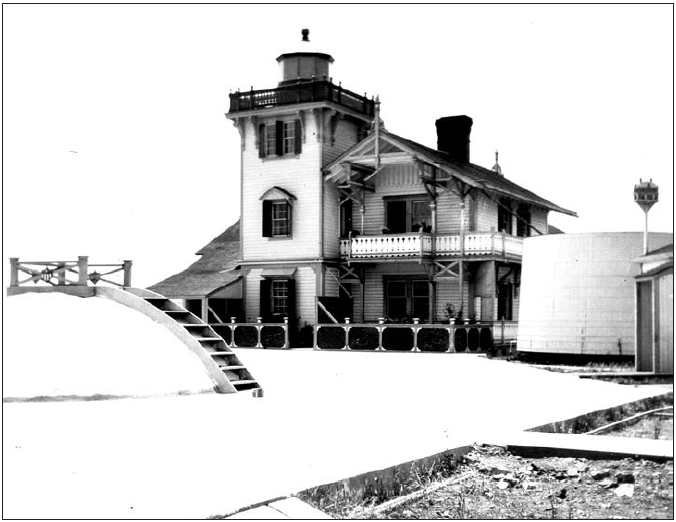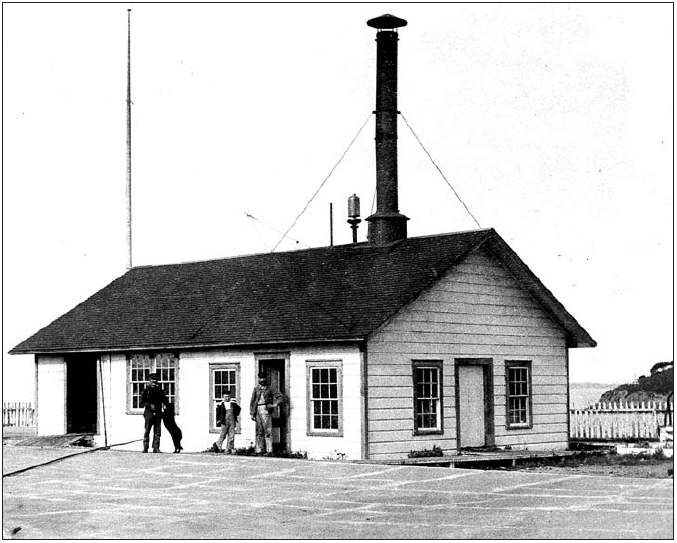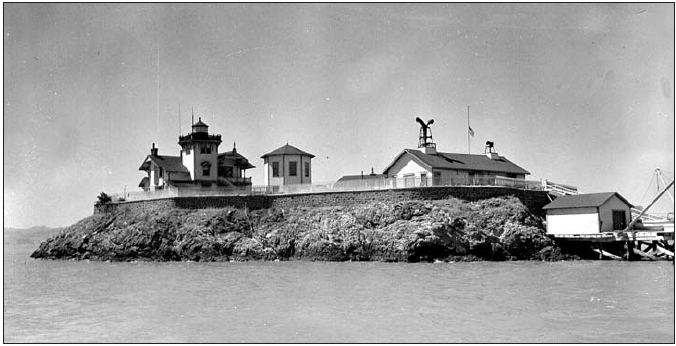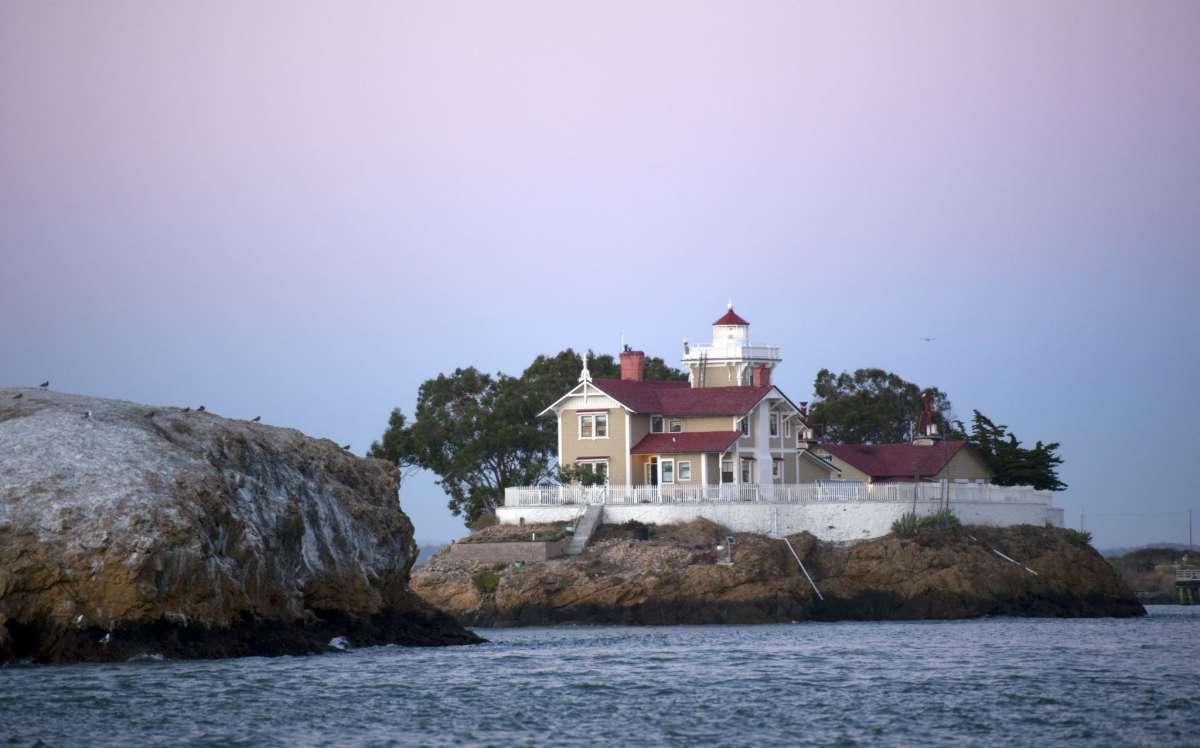East Brother Light Station
East Brother Light Station is not a typical lighthouse by any standard. The lighthouse is a rectangular, buff-colored, wooden construction with white trim. It is not particularly high and faces a bay rather than an ocean. Nonetheless, in the 19th century and early 20th centuries, East Brother was not an out-of-the-ordinary lighthouse in terms of design. In the late 1800s, a number of West Coast lighthouses were constructed following the same blueprints. Today, East Brother is a one-of-a-kind place, given that it has been reconstructed to its former glory. This essay demonstrates that compared to a live museum, East Brother Light Station conserves an essential aspect of America’s nautical legacy.
The Construction and History of East Brother Light Station
San Francisco Bay is a vast expanse of water that stretches for miles. In addition, Humboldt County, California, is home to two islands known as The Brothers, located slightly south of Cape Mendocino. The San Francisco Bay islands’ names became formal 170 years ago after the United States Coast Survey incorporated them to create the bay’s first reliable map (Perry, 2018). As it is evident, these names have been retained ever since.
Transportation via San Pablo Strait saw a rise in traffic in 1854 after the federal authority built a Navy shipyard in Vallejo. Roughly 700 ships were in the Mare Island fleet by the year 1866 (Perry, 2018). Beginning in the 1870s, three locations facing the bay were identified as those that needed fog indicators and lighthouses due to the rapid expansion of the San Francisco Harbor area. Thus, the construction of a lighthouse and fog signal was authorized by Congress on March 3, 1871 (Perry, 2018). However, it would take another two years before the foundation came up.
East Brother Island sits on the eastern edge of San Pablo Strait. An acre of land is all that separates the island from the mainland. West Brother, the next-door neighbor and only a short distance away, is even more compact. West Brother has no human occupants, which has a rounded, rocky top occupied by gulls, cormorants, and pelicans. Before 1873, the federal government contracted builders to blow off the pinnacle of the island and start building a lighthouse on East Brother station (Perry, 2018). The images below show the East Brother Light Station at different stages of development.

Note: A concrete rain collecting basin sits in the middle of the islet. Redwood tanks like that to the right are used to store water emptied from the cistern at the left. From Keeper’s log by United States Lighthouse Society, 1989.

Note:The initial appearance of the fog signal facility. A little to the left of the chimney stack is a boiler whistle fog signal. From Keeper’s log by United States Lighthouse Society, 1989.
A lighthouse was desperately needed by shipowners who navigated the San Pablo Strait. Inland ports like Stockton and Sacramento are connected to the Golden Gate and San Francisco Bay via the strait. These seas must be crossed by ships on their way in and out of the Mare Island Navy Yard. Night or fog-bound vessels could easily come into contact with numerous rocky islets and adjacent reefs, all of which pose a threat to navigation. When it was first constructed, the lighthouse had six rooms with a tower fitted to the lens (Perry, 2018). In addition, the government’s personnel built a fog light building, a workshop, a wharf, and a boathouse. Keeping in mind that the post could only be accessed by boat, the keepers were prepared to deal with any unexpected situation that might arise.
Several individuals have worked as guards and assistants East Brother over the years. Every night, they dutifully maintained the light on, directing ships through the bay areas. Many of the island’s custodians resided there with their relatives and cherished their memories of their time there in later years. According to Putnam (1913), despite the tranquility of the island life, there was a strong sense of purpose and fulfillment that permeated everything. Even though the site was in many respects cut off from the rest of the world, it was not forgotten. East Brother’s operations changed as a result of technological advancements and changes in lighthouse administration. In 1934, kerosene was replaced with electricity as the source of power for the lens (Perry, 2018). Eventually, alternating teams of Coast Guardsmen took over the traditional Lighthouse Service keepers.

Note: The station was seen in 1945, with all critical structures completed. From Keeper’s log by United States Lighthouse Society, 1989.
Guardians had to read, write, and keep correct records to be considered for the position. In addition, they needed to be physically fit and mechanically adept to do routine maintenance and repairs on the facilities and equipment (Perry, 2018). East Brother Light Station’s bound notebooks document daily existence on the island for more than seven decades. As a rule of thumb, each day’s journal entry was limited to a simple line used to describe the atmosphere and the day’s activities, but on occasion, keepers would elaborate (Putnam, 1913). One can get a sense of life at the light station by studying the handwritten notes scattered across the fading pages.
Many fascinating details can be found here, including news of shipwrecks, the countless hours spent washing and painting, the shipping of coal and other provisions, and the frequent voyages throughout the bay. Perhaps the keepers didn’t think anyone would be reading this a century from now.
The station’s last chapter was written in the 1960s, when technology brought about the end of an era. The Coast Guard decided upon automation of East Brother. As a cost-saving measure, a spinning beacon was mounted on the lighting room’s ceiling, and the island’s remaining residents departed (Perry, 2018). It had been reported that the ancient buildings would be removed, and a lens would be mounted on a metal tower by Coast Guard personnel. Their rationale was that it was less susceptible to vandalism, and it would be simpler to manage. Many residents in the area were outraged by the news and pledged to safeguard the quaint old relic.
The station was incorporated into the National Register of Historic Places in 1971 in part due to the work of the Contra Costa Shoreline Parks Committee. Unfortunately, the Coast Guard and other public organizations did not have the funds to repair or restore the buildings. Birds and other natural forces reclaimed the island over ten years. The lens and digital fog signal were only examined on a regular basis by Coast Guard crews. Rusty iron and decaying wood were all signs of time passing in the meantime.
The non-profit citizens’ group East Brother Light Station Inc. was founded in 1979 to renovate the station and make it accessible to visitors. The U.S. Department of the Interior awarded the group a Maritime Preservation Matching Grant (Perry, 2018). To the delight of the Coast Guard, the scheme was approved, and the group was allowed to inhabit the island. The beacon and other island monuments were repaired and rehabilitated with the support of various donations and dozens of volunteers. Investments of $300,000 were made for this project that was finalized in 1980 (Perry, 2018). Volunteerism and day-use fees have made it possible to keep up with repairs and renovations at the site.

Note: The modern-day appearance of The East Brother Station. From We’re in a lot of trouble by A. Chamings, 2021, SFGATE.
East Brother Light Station has stood the test of time. Sadly, this has not been the case for most of California’s lighthouses. Lighthouses erected to keep an eye on the shore and bays of California have been lost or renovated to such an extent that their scenic and historical significance has been greatly diminished. There is a lot to be said about preserving East Brother’s lighthouse, as well as the complete station itself. More than a few living relatives and descended descendants of the first keeper families have reminisced about life on the island. A regular chronicle of the station’s activities from its first light in 1874 until the end of World War II is preserved in its diaries. That’s what renders the East Brother Light Station’s story so unique and fascinating.
References
Chamings, A. (2021). “We’re in a lot of trouble”: The East Brother Light Station in the San Francisco Bay has no power. SFGATE. Web.
Perry, F. (2018). East Brother: History of an island light station. East Brother Light Station.
Putnam, G. R. (1913). Beacons of the sea: Lighting the coasts of the United States. National Geographic Society.
United States Lighthouse Society. (1989). Keeper’s log. United States Lighthouse Society.